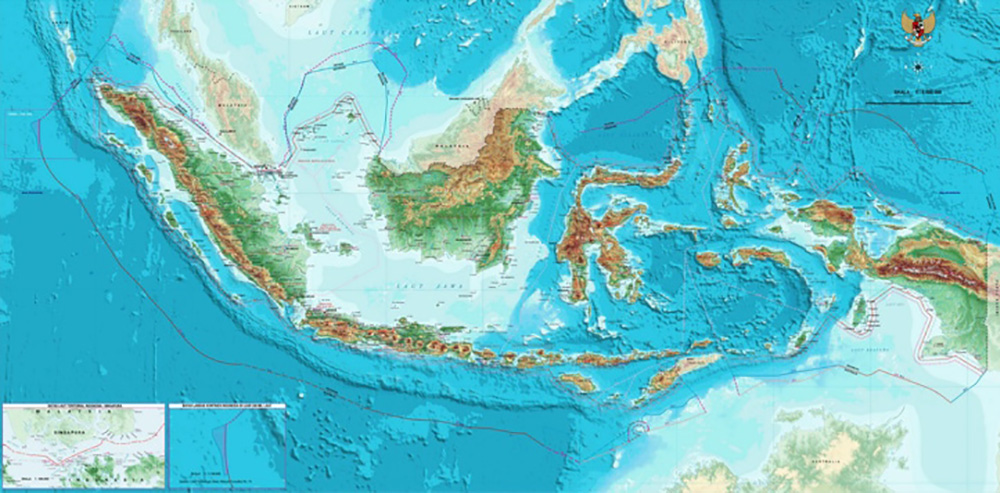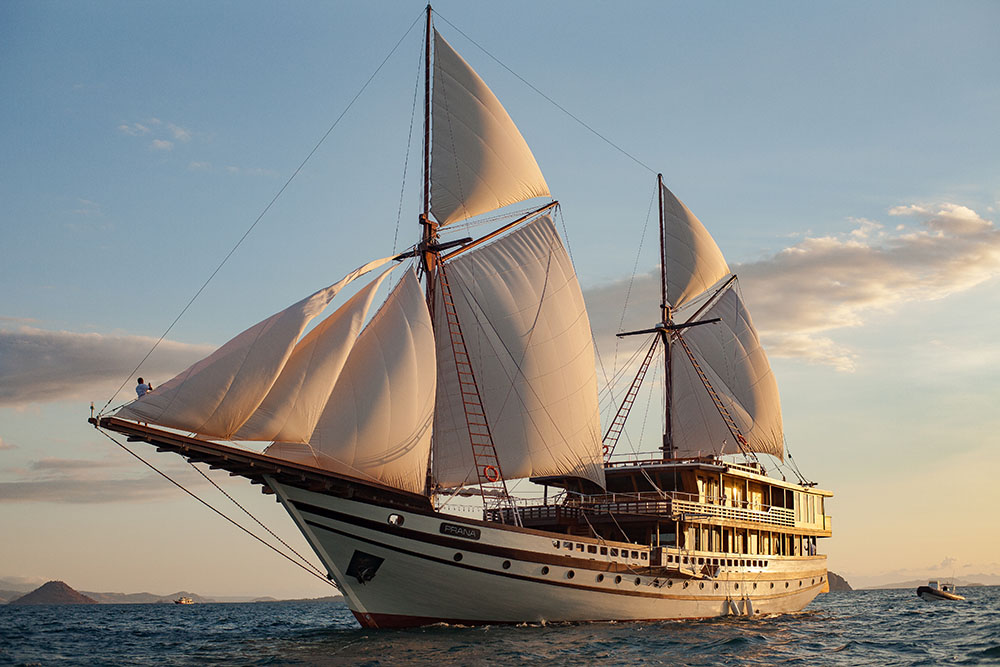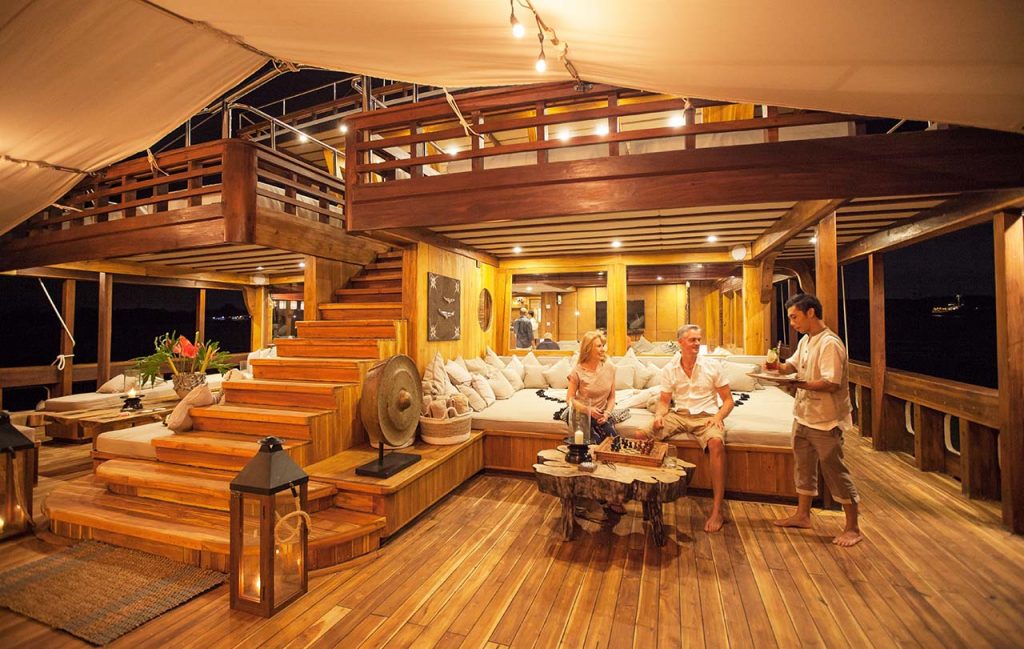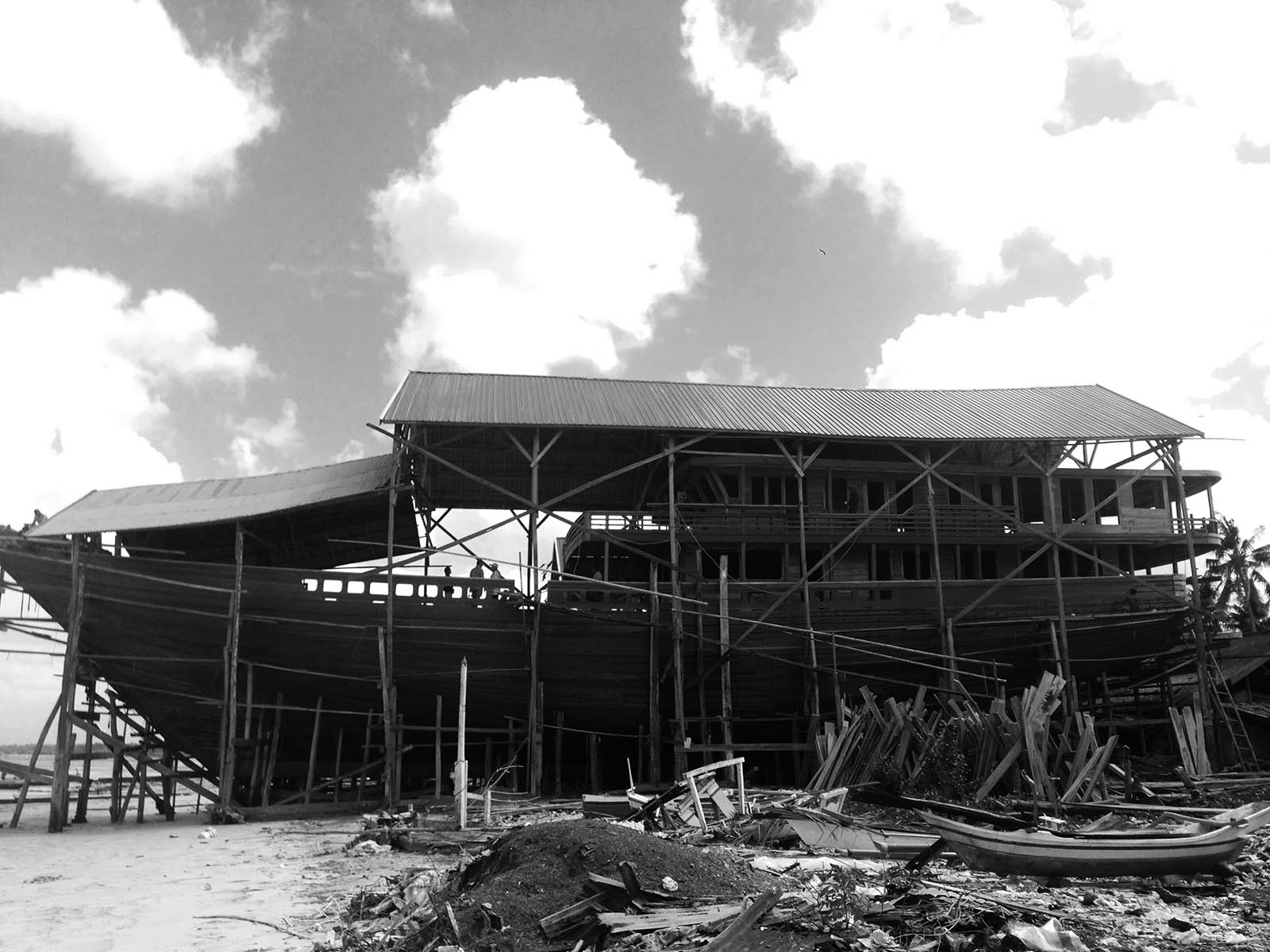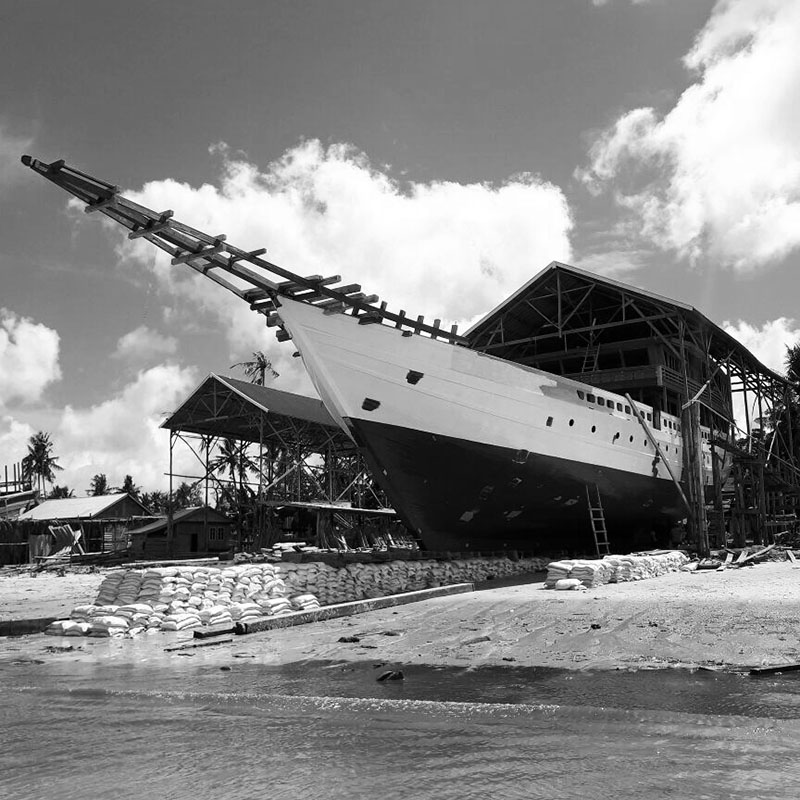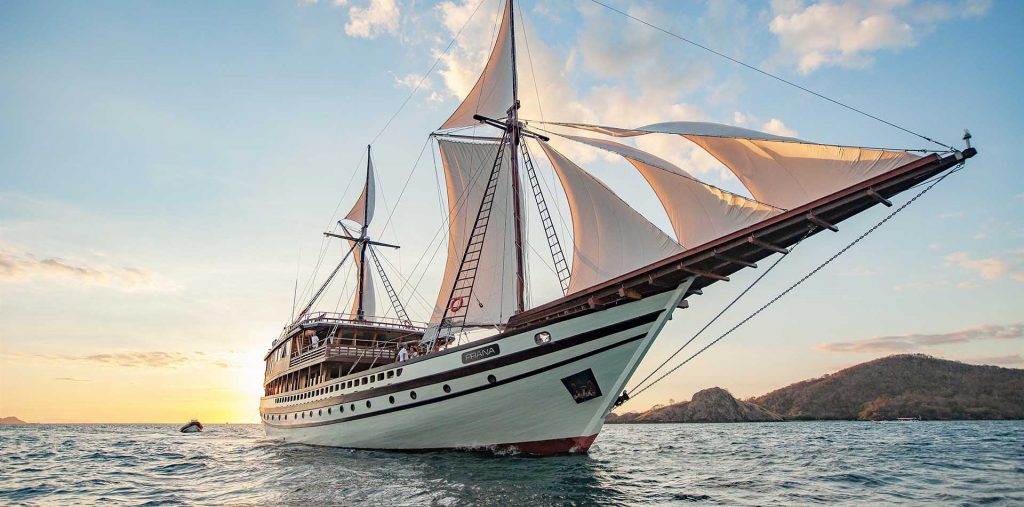The Indonesian Phinisi Sailing Vessel
Windjammers, seafarers and the emblem of the Phinisi
Indonesia is an archipelagic nation made up of over 17,000 islands, so it is hardly surprising that this is a realm of seafarers and windjammers. For centuries, the people here have sought to become one with the ocean, using its vast resources to feed their families, its endless power to transport their goods and its grandeur and mystery as a constant source of folklore and inspiration. Ruling the waves is a fundamental part of this diverse, adaptable and vibrant country’s history as well as its strength, with the Phinisi standing as the cornerstone of this noble nautical tradition.
The romance of an elegant pirate ship
This glorious yacht, also sometimes spelt Pinisi, is evocative of a bygone era with elegant scooping bowsprits, multiple sails and soaring masts that simply draw people into their embrace. They set fire to the imagination making you desire to run your hands over the ironwood and inhale the freedom of the salty ocean breeze thus supernaturally liberating your inner Captain Jack Sparrow to voyage upon the high seas.
The idea that this trading vessel could be utilised as a leisure craft was pioneered by a small group of European born Indonesian residents who saw valuable untapped tourism potential. In the beginning, during the late 1980’s and early 1990’s, this was about ferrying backpackers around far-flung destinations without much transport.
With this modification of use came more adaptations in design and soon these boats were back in fashion as the latest luxury cruising craft. Ingenuity and adaptability have breathed new life into this boatbuilding tradition and brought it slap bang into the 21st century. These spit and sawdust vessels now often come with serious horsepower and are air-conditioned, with state of the art water filtration systems and beautiful designer décor.
A United Nations Accolade
In December 2017 the United Nations Educational, Scientific and Cultural Organisation (UNESCO) decided to recognise the cultural significance of the Phinisi boat-building tradition. During the 12th Session of the UNESCO’s committee, they defined the ‘art of boatbuilding in South Sulawesi’, as part of a ‘millennia-long tradition of … boat building and navigation’, as part of the world’s Intangible Cultural Heritage. Other existing UNESCO listings for Indonesia’s outstanding cultural expressions are the wayang kulit shadow-puppet theatre, the wavy-bladed kris dagger and the extraordinarily beautiful art of batik.
A brief history on the waves
For over 100 years, beginning in the middle of the 19th century, the Phinisi has been designed and built by the Bugis (and Makassan) people originating in South Sulawesi. These proficient seafarers were actually key participants in the world’s ancient spice trade and also had age-old economic and cultural links with nearby northern Australia and its Indigenous coastal populations.
Originally, Phinisi were the engineless trading ships comprising a tall, powerful, topsail-ketch rig with unusual, permanently standing gaff booms. (A ketch is a fore-and-aft rigged vessel with two masts, where the larger or main mast is always forward of the smaller mast.) Furthermore, the boat’s design changed very little until the mid-1970s, when owners began to add motors and therefore had to adapt the hulls to withstand the vibrations.
Ritual and ceremony in the 21st Century
Today the term Phinisi is also applied to very big, motorised timber ships which are still hand-built in the South Sulawesi tradition by Bugis or Makassan shipwrights who trade all over Indonesia. Enormous trading vessels weighing over 500 tonnes are still built on beaches by the heirs of the Phinisi custom in the 21 century.
Today, the builders might incorporate some modern technology into the construction process to speed things up a little but essentially what they do has changed little. The dynamic and evolving design of this legendary boat still embraces ancient ritual and ceremony and these are central to UNESCO’s recognition. The Phinisi was originally never built to drawn plans but was created miraculously using a series of proportions memorised by master builders combined with ritual, prayer and ceremony.
The original designs were made using timber planks that were cut and sculpted using an adze and chisel with each piece being distinctively shaped and named before being fastened by wooden pegs or bindings of rattan. No iron fastenings or saws were used at all.
These amazing vessels have evolved and changed along with demands of the world showing an organic resilience as deep as the ocean itself. Moreover, this spirit of innovation coupled with (slightly ironically) a respect for cultural customs makes the Phinisi a fitting emblem for Indonesia and it appears on everything from banknotes to bags of rice.
Prana the most luxurious Phinisi on the waves
Prana was built in the traditional Bugis-Makasar maritime heritage and the team are committed to preserving the precious history of the Phinisi. We use auxiliary sailing rigs (as well as engines) and our Indonesian crews must learn and use the ancient sailing skills of their forefathers thus keeping the traditions alive.
This luxury Phinisi provides every contemporary comfort as well as embracing its rustic heritage. With over 900 square metres of usable space, 4 decks and 9 lavish ensuite cabins you will be more than well looked after.
Onboard you will also find provision for wakeboarding, scuba diving, paddle boarding and water-skiing as well as a spa and a cinema under the stars. If the boat builders of yesteryear could see this phenomenal vessel they would think that it had been constructed by the sea Gods themselves.
For more information on our luxury dive charter contact the Prana team at info@pranabyatzaro.com or +34 971 188 894

